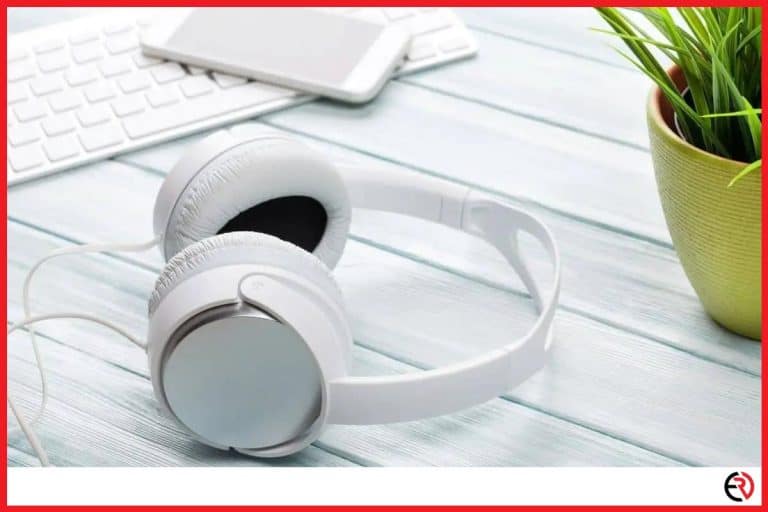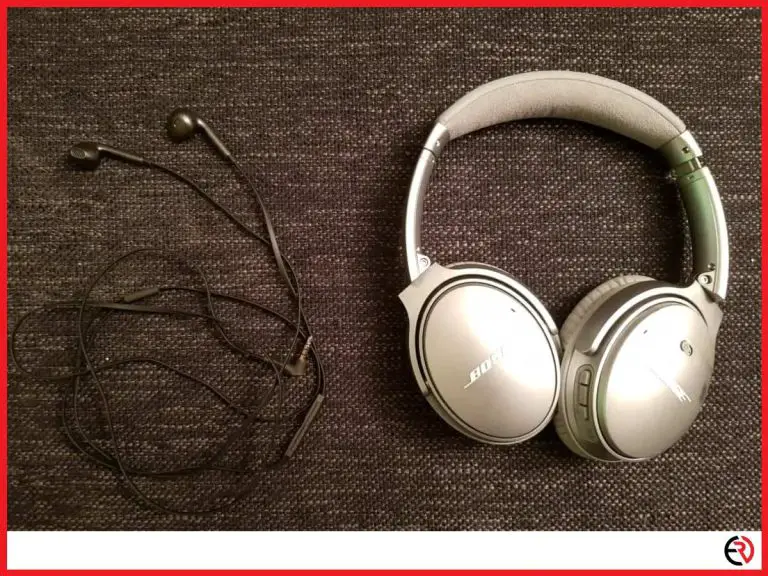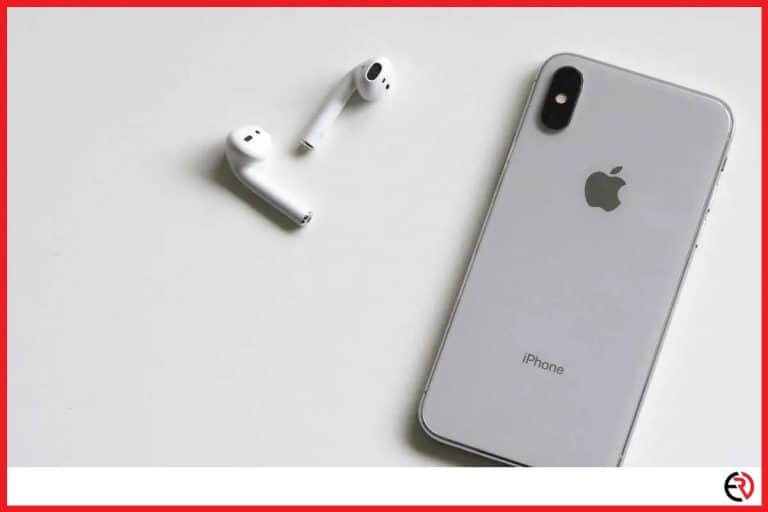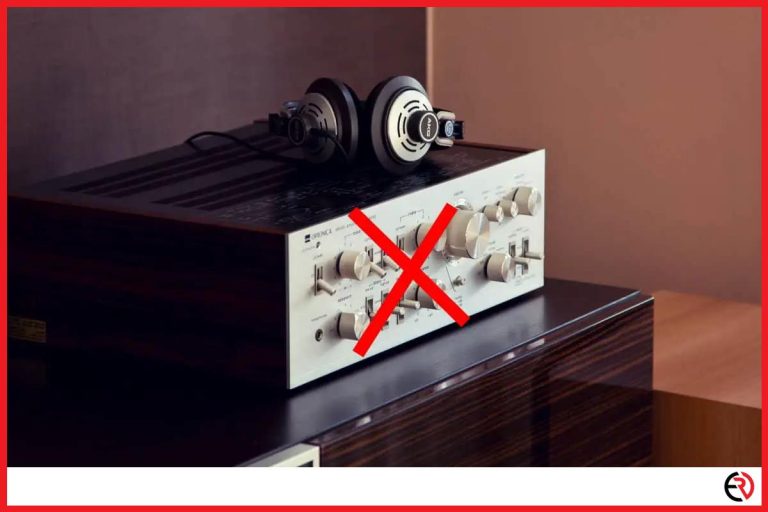The Science on How Long Headphones Should be Worn For
This post may contain affiliate links which means that, if you choose to make a purchase, I may earn a small commission at no extra cost to you.
According to the American Osteopathic Association, 1 in 5 teens will experience hearing loss due to headphone usage. There are many issues that can arise from hearing loss – even minimal hearing loss. There are plenty of ways you can damage your hearing by using headphones.
So, how long should headphones be worn for? The American Osteopathic Association recommends limiting headphone use to one hour a day at no more than 60% volume.
Headphones are convenient, but there are legitimate downfalls to using them incorrectly – like the occurrence of ear infections and vertigo to add to potential hearing loss. It is important to make sure that you are as considerate of your ears as you are of your headphones!
How Long Should Headphones Be Worn?
James E. Foy, a Doctor of Osteopathic Medicine or DO, claims that:
“listening through headphones at a high volume for extended periods of time can result in lifelong hearing loss for children and teens.” If this is what improper headphone use can do to young ears, imagine what it can do to aging ears.
Foy explains further that the amount of time headphones can safely be worn depends on the volume you are listening at. For instance, listening to your headphones at 60% volume allows 60 minutes of listening; however, listening at a maximum volume only allows for 5 minutes of listening.
Some tips for reducing the hearing loss caused by headphones include:
- Opt for headphones over earbuds. Earbuds sit directly in the ear, sending their sound straight into the ear canal with virtually no buffer between the eardrum and the sound. Headphones are a better choice because they offer some buffer between the eardrum and the headphone, and they don’t output sound directly into the ear canal.
- Purchase noise-canceling or noise-isolating headphones. These help to drown out all outside sounds, so you don’t have to listen at such high volumes.
- Be aware of exactly how loud your headphones can get. The maximum volume of most headphones is 115 decibels. At that volume, permanent hearing damage can be done in as little as 15 minutes. Most people are not able to know the decibel level they are listening to, so using the 60/60 rule is the best guideline.
Potential Risks of Too Much Headphone Use
Hearing loss is not the only risk of improper headphone use. Using headphones can be unhealthy and dangerous.
Some of the potential risks of headphone use include:
- Ear Infections: Earbuds and headphones are electronic devices, so they produce heat that can cause skin irritation and introduce bacteria. You should keep your earbuds and your headphones clean, and never share headphones with others. Sharing headphones is the number one way to transfer bacteria into your ear. Remember, clean headphones mean clean ears.
- Vertigo: Vertigo is a condition that causes you to feel unbalanced, dizzy, and nauseated. It is an inner-ear condition that can be brought on by prolonged exposure to infections and bacteria.
- Radiation Exposure: Some of the most popular headphones being made currently are wireless and run on Bluetooth technology. These headphones expose your ears, and your head, to low-frequency radiation. There are still studies being done to determine what all of the risks are with this radiation, but a 2018 study by the World Health Organization has reported that “radiofrequency (RF) radiation produces biological effects that mirror carcinogens in male rats.”
- Inattention: There are times that headphones can be extremely dangerous to wear. Some people drive with headphones and are not able to pay attention to what is going around them. Make sure that you aren’t using headphones when you need to pay attention to your surroundings for safety concerns.
- Skin Issues: Earphones and headphones that are not regularly cleaned or are worn excessively can cause skin issues like acne.
How to Tell If You’ve Suffered Hearing Loss
Hearing loss is not typically noticeable right away. It is a condition that tends to worsen over time. While you may not be able to tell if you have already succumbed to hearing loss, there are signs that you can watch for that can point to hearing loss.
Some signs of hearing loss are:
- Buzzing, ringing, roaring, or hissing in the ear.
- Muffled sounds.
- A feeling like your ear is plugged.
- Having to set your volume higher than normal when listening to the TV or radio – or even your headphones.
- Having difficulty understanding speech in crowded and noisy places.
The biggest worry when dealing with hearing loss caused by headphones is that damage to your hearing caused by too much exposure to loud noise is irreversible. There is no treatment and no way to gain back the hearing that you’ve lost.
There are hearing aids and implants that can be used to help you hear better, but they will not fix the damage. All that hearing aids can do is give a boost to your hearing by amplifying sounds. The only way to combat hearing loss is to prevent it.
How Noise Can Damage Hearing
Headphones themselves are not what causes damage; it is the volume of the headphones that causes the damage. It is important to know exactly how headphones deliver sound to your eardrum to understand how listening at loud volumes damages your hearing.
Sound is sent from headphones to your ear in this process:
- Sound waves enter the ear and cause the eardrum to vibrate.
- The eardrum vibrations are transmitted through several small bones to the cochlea, which is located in the inner ear.
- Within the cochlea, there are thousands of extremely small “hairs” in a fluid-filled chamber. Once the sound vibrations reach the cochlea, the fluid in it vibrates and moves the hairs.
When you listen to louder sounds, the vibrations are stronger, and the hairs in the cochlea move more. After a while of listening to loud sounds very often, the cochlea’s hairs lose their sensitivity. They can bend or fold over because of extreme vibrations.
You can notice the results of the cochlear hair cells being worn out after being exposed to extremely loud noises, like concerts and stadium sports games. Sometimes, the hearing loss is temporary. However, prolonged or repetitive exposure to excessively loud noise leads to permanent hearing loss.
Decibels – Explained.
You know that you should follow the 60/60 rule when listening to your headphones and that most headphones have a maximum volume of 115 decibels. To put decibels and hearing damage into perspective, look at this table.
| Decibel Number | Example of Sound |
| 20 | rustling leaves |
| 60 | normal speech, air conditioner |
| 90 | squeeze toy, lawn mower, arc welder |
| 110 | rock concert, jackhammer |
| 140 | jet engine at takeoff |
| 180 | rocket launch |
| 194 | sound waves become shock waves |
Decibels, noted as dB, measure audible sound. Something measuring 0 dB is the quietest sound that a healthy human ear can register. Every increase of 3 dB notes a doubling of sound intensity. So, something registering at 21 dB has doubled in intensity 7 times since 0 dB – creating a sound 14 times louder.
Some examples for decibel limits for healthy human ears are:
- 91 decibels – healthy ears can only tolerate up to two hours of exposure
- 100 decibels – damage to your ears can occurs within 15 minutes
- 112 decibels – damage to your ears can occur in only 1 minute
- 140 decibels – immediate nerve damage occurs in the ear
140 decibels is the measurement of sound for jet engines, firearms, and firecrackers. Simply having a firecracker go off next to your ear can result in permanent hearing damage. If you find yourself near anything that is registering as a high decibel level, plug your ears with your fingers!
Understanding How Headphones Damage Hearing
The reason that headphones can cause hearing loss so quickly is because they are situated so close to the ear. The best way to protect yourself from high decibel noise is to distance yourself from it. If you are blaring your music in your headphones, you are leaving no distance between you and the loud music.
Some tips for lessening hearing loss from headphones are:
- Opt for over-the-ear headphones over in-ear headphones. It may not be a lot of distance, but it does give some distance between the sound and your inner ear to help reduce loudness and prevent hearing loss.
- Turn down the volume. Always remember the 60/60 rule. Don’t listen to your devices louder than you have to.
- Make sure that your headphones are always bought new. You do not want to wear used headphones. Never borrow headphones from someone else – especially the ones that are worn inside your ear.
- If you are using earphones, make sure they are placed correctly into your ear, so you do not have to put the volume extremely loud to hear.
There are many ways that you can reduce the chance of hearing loss from headphones. The basic prevention to remember is to not listen at maximum volume and to never listen to your headphones excessively.
Types of Headphones and Their Descriptions
There are many kinds of headphones available today, and all of them have their own advantages and disadvantages. The four categories of headphones are circumaural, supra-aural, earbud, and in-ear. The biggest differences between the headphones are how they are worn, but there are other variants as well.
Circumaural (Over-Ear) Headphones
Circumaural headphones are often called full size headphones, and they are characterized by large circular or ellipsoid earpads that cover the entire ear. The design of these headphones is made to completely seal the ear and prevent outside noise from being an issue.
One drawback to full size headphones is that they can be heavy. However, you can purchase these headphones with ergonomic headbands and earpad designs to lessen discomfort. Circumaural headphones are commonly used in recording studios.
If you want to try basic circumaural headphones, check out:
Audio-Technica ATH-M20x Professional Studio Monitor Headphones
Available on Amazon for $49 with free shipping; 4.4 out of 5-star rating
Supra-aural (On-Ear) Headphones
Supra-aural headphones are commonly referred to as on-ear headphones and are characterized by soft earpads that rest on the ears. These are the “old-school” headphones you often think of when you hear the term headphones because they were popularized in the 1980s after being bundled with Walkmans.
Some disadvantages of on-ear headphones are that they don’t prevent external noise well, and they can be uncomfortable because of pressure being put on the ear. However, they are smaller and lighter than circumaural headphones, making them much easier to carry around with you.
If you want to try basic supra-aural headphones, check out:
Koss KPH30iRB On-Ear Heaphones
Available on Amazon for $29.99 with free shipping, 4.4 out of 5-star rating
Open-Back Headphones
Open-back headphones can be either circumaural or supra-aural and are characterized by the backs of the earpads being open. This is a great choice if you want a more natural sound that mimics speakers because the opening allows the sounds around you to reach your ears as well.
LyxPro OEH-10 Open Back Over-Ear Headphones are a great choice of open back headphones. They are available on Amazon for $59.99 with free shipping and have a 4.2 out of 5-star rating.
Closed-Back Headphones
Closed-back headphones can be either circumaural or supra-aural and are characterized by a closed, or sealed, back behind the earpad. They usually put out stronger sounds than their open-back counterparts, and they will block some external noise.
The Tascam TH-03 Studio Closed Back Headphones are an excellent closed-back headphone option. They are available on Amazon for $25 with free shipping and have a rating of 4.1 out of 5-stars.
Semi-Open Headphones
Semi-open is the term used to describe circumaural or supra-aural headphones that have earpads with partially open backs. These headphones are a happy mix of open and closed-back headphones.
If you’re looking for a nice pair of semi-open headphones, you can find Superlux HD668B Dynamic Semi-Open Headphones on Amazon for $37.99 with free shipping. These headphones have a 4.2 out of 5-star rating.
Earphones
Earphones are designed to sit directly inside the outer ear. They do not go into the ear canal, but they send sound straight into the ear canal. Earphones are very portable, but they are known for being uncomfortable. The way they fit lets external noise in and doesn’t provide any acoustic isolation.
These are one of the headphones that users will turn up to dangerous volume levels to compensate for poor sound quality. However, earphones allow for their users to be more aware of their surroundings, and some are sold with foam pads that allow for more comfort.
Some popular earphones are Apple EarPods In-Ear Earbuds. They are available on Amazon for $10.34 and have a 3.3 out of 5-star rating.
In-Ear Headphones
In-ear headphones are small headphones that are inserted directly into the ear canal. They are sometimes called in-ear monitors (IEMs) or canalphones. IEMs are the higher-end in-ear headphones that are used by audio engineers, musicians, and audiophiles. They deliver sound straight into the ear canals.
In-ear headphones have earbuds that are fitted with silicone, rubber, elastomer, or foam. You can even get custom earbuds made that allow for more comfort and noise isolation. For the most part, basic in-ear headphones block external noise. They are known to cause inattention, so use them safely.
Panasonic ErgoFit In-Ear Earbud Headphones are an awesome in-ear headphone option that are available on Amazon for $8.06 and have a 4.1 out of 5-star rating.
Headsets
Headsets are headphones that come equipped with microphones, as well. There are single-ear and double-ear headsets, and they are commonly used for gaming, aviation, and studio intercom systems. You can find many different headphone styles on headsets – it’s simply up to you to choose your favorite!
One awesome gaming headset is the Jeecoo Stereo Gaming Headset with Noise Cancelling Over-Ear Headphones. This headset is available on Amazon for $26.99 with free shipping and has a 4.5 out of 5-star rating.
More Ways to Protect Your Hearing
Headphones are not the only thing that can cause hearing loss. There are many other factors that contribute to damaged hearing. However, there are ways to protect your hearing in everyday life as well.
- Stay away from loud noises. If the noise around you is loud enough to hurt your ears or you have to raise your voice for people to hear you, you are being exposed to noise that can harm your hearing.
- Protect yourself when you go to concerts and events. One way to do this is to wear earplugs that will muffle the loud noises. Additionally, you should make sure to not stand next to any of the speakers and take a break from the noise about every 15 minutes.
- After you have been exposed to really loud noise, you should give your ears a break for at least 18 hours to make sure they recover properly.
In Conclusion…
While headphones offer privacy and convenience and are a necessary part of your daily life, you must learn to use them correctly in order to protect your ears. Choose headphones that allow distance between the sound and your ears, and make sure that you follow the 60/60 rule as often as possible.
Headphones are truly a great invention that has helped us carry and enjoy our entertainment with us everywhere, but, as with most things, there are precautions that should be taken.







